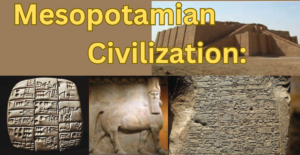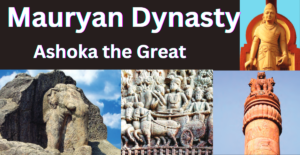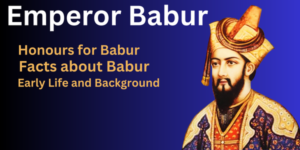Administration,Society and Economy in Mughal empire
Administration and Economy in Mughal empire:
Learn about mughal rulers
Mughal administration:
The emperor was at the top of the administrative hierarchy. He held supreme power and made important appointments.
Subedar: The Mughal Empire was divided into twelve subas or Each was administered by a subedar appointed by the emperor, responsible for maintaining law and order , suppressing rebellions and providing military support.
Diwan: The Dewan headed the revenue division at the Subha level. He managed revenue collection and expenditure. The peasants often obtained advance loans (daqawi) through the agency of the Dewan.
Bakshi:Like Mir Bakshi at the middle level, he was responsible for inspecting the Bakshi soldiers and horses in the suba and distributing paychecks to the mansabdars. Bakshi collaborated with Vagainikar to inform the Centre about provincial events.
Sadar: At the provincial level, Sadr represented the Central Sadr and was responsible for overseeing religious matters, welfare, and the judiciary. This officer supervised the activities of the Qazis.
Mughal Administration: Local Government:
Sarkars, Parganas and Villages:The administrative divisions included sarkars, and were divided into parganas, and smaller units were villages .
Faujdar:Appointed by the imperial order, the faujdar at the sarkar level maintained and maintained law and order in his jurisdiction . He also assisted in revenue collection.
Amalgusar or Amil: Responsible for revenue collection, he assessed and supervised enforcement revenue collection, encouraging voluntary tax payments and encouraging agricultural expansion.
Shiqdar: At the Pragana level, Shikthar assisted the amils in revenue collection .
Guanungo: Pargana’s land records are maintained.
Kotwals: Appointed by the imperial authority, the kotwals maintained law and order in the cities and monitored the entry and exits.
Patwari: Managed village fund records.
Mukkadam: He served as the village headman and helped in revenue collection and peacekeeping.
Gilader: Supervise the fortresses and their administration and representative areas.
Mudasati: At the port level, Mutasati, directly appointed by the emperor, led the administration, ran a custom house, collected taxes on goods , and supervised Mint House. The port administration operated independently of the provincial authority.
Mughal Society:
The population of India increased from 150 million in the 16th century to 200 million in the 18th century.Since agriculture was the primary occupation, village communities played an important role in the social structure.The Mukkadam served as village headmen, forming panchayats responsible for tax collection and distribution of land .
The middle class consisted of small mansabdars, shopkeepers, doctors, musicians , artists, and lower-level Mughal administrative officials. A salaried class received grants such as ‘madat-i-mash‘ and acted as a link between villages and cities.Important cities include Delhi, Agra, Fatehpur Sikri, Lahore, Ahmednagar, Dhaka and European cities like Multan , London and Paris.
Along with the luxurious lifestyle for nobles and zamindars, inequalities in living standards became apparent. The privileged classes enjoyed rights and privileges, while the poor lived in mud houses and had simple food.Jagirs were mostly paid by nobles from Central Asia and Iran . Zamindars, mainly Hindu upper castes and Rajputs, had armed forces and dominated land and peasants.
Continued migration from Central Asia enriched Indian culture. Despite the racial divisions, the aristocracy promoted a culture of conformity by supporting Persian-Indian painters and The caste system was a dominant system, with the lower castes facing oppression. Although the Bhakti movement advocated against social discrimination, the landless peasants were subjected to forced labour.Women had minimal hereditary rights and faced restrictions on widow remarriage among higher-caste women, engaged in daily chores, spinning yarn and agricultural Attempts were made by the Mughal administration to prevent marriage practices among the upper castes.Muslim brides were entitled to a dowry called mahar and had some shares in ancestral property, though not equal to women.
Mughal Economy:
The Mughal economy was large and prosperous, contributing 5% of the world’s manufacturing output until 1750.The 18th-century before the Industrial Revolution, like Western Europe, was described as a form of pioneer-industrialization. The Mughals developed an elaborate road system important for economic activities.Introduced a uniform currency, the rupee and dam, which contributes to economic standardization.Agricultural taxes instituted by Akbar became an important source of wealth.Extensive trade networks with large imports of gold, especially silver, from New World and Japan.About 80% of Mughal India‘s imports were gold.The urban workforce is 18%, while in rural areas 82%.
Emphasis on agrarian reform, creation of irrigation systems and introduction of japt-land revenueIndia produced 25% of the world’s industrial output until Textile production, especially cotton, dominated the MughalBengal, especially Dacca, was an important centre for cotton production and textile trade.At the beginning of the 18th century, Indian cotton textiles accounted for 25% of the world trade .Major exporter of rice, silk, cotton, textiles and opium to Europe, Indonesia and Japan.Shipbuilding production in Bengal exceeded that of its North American colonies in the 16th and 17th centuries.The introduction of flushed deck design in Bengal rice ships had an impact on European shipbuilding during the Industrial Revolution.
Learn about mughal rulers




